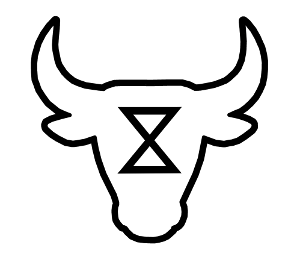Conventional Systems
What is Good Governance?
2:48 minutes
Watch this video to learn how good governance can ensure accountability, fairness and transparency as an association makes decisions on behalf of its members.
The Rules for Rulers
18:12 minutes
Adapted from “The Dictator’s Handbook: Why Bad Behavior is Almost Always Good Politics”, Bruce Bueno de Mesquita and Alastair Smith’s canonical book on political science.They started from a single assertion: Leaders do whatever keeps them in power.
Self-management / Self‐Organizing Systems (SOS)
Self-Organisation Beyond Hierarchy
2:46 minutes
A short and simple introductory video that introduces collaborative governance systems beyond the traditional hierarchical methods we are used to.
Creating Culture
12:31 minutes
Each organisation has its own particular culture; its like a unique personality. Organisational culture is influenced by many things: values, power structures, personalities, assumptions, unspoken norms… And it has a massive influence on how effective an organisation can be. This episode explores how culture is created and worked with using a conventional hierarchy and then how it looks using two methods of self-organisation beyond hierarchy: more collaborative and agile approaches.
Working with Power
11:50 minutes
The way that power is structured and used has a massive impact on how an organisation works and how effective it can be. Who has authority for making certain decisions? Are decisions made by a leader, through a democratic vote, using consensus…? Is power concentrated, shared or distributed? These are some of the issues explored in this episode which looks at how this is done using a conventional hierarchy and then how it looks using two methods of self-organisation beyond hierarchy: more collaborative and agile approaches.
Getting Things Done Together
15:04 minutes
This episode describes six areas of organisational life which need to be attended to for it to be healthy and successful, which are also the titles of the 6 episodes in this series: Creating Culture; Finding Fit; Working with Power; Discovering Direction; Getting Things Done Together; and Learning and Lasting. It explains how attending to all 6 areas create the conditions for collaboration to actually get the work done, both inside and outside of meetings. This episode explores how this is done using a conventional hierarchy and then how it looks using two methods of self-organisation beyond hierarchy: more collaborative and agile approaches.
What does self-management mean for you?
12:32 minutes
How do you think about self-management? Most people view it simply as a better way to organize work.
That’s a perfectly legitimate way to hold it. In this video, I offer two other perspectives: self-management as the only way I would ever want to organize work. And self-management as the most natural way to organize work.
Start with why
9:56 minutes
Organizations where leaders started talking about self-management as a goal in itself, without sharing a deeper “why”, still have scar tissue to show for it.
Self-management is a concept, and few people get excited for their work place to embrace a concept. In this video, I will invite you to clarify what could be the most powerful invitation you could make.
No more structures, processes, rules ?
9:52 minutes
Self-management is not the absence of structures, processes and rules.
This is a pitfall that many organizations pay the price for, until they manage to correct it. When you deconstruct the old system, but don’t build up new systems, you end up with a “blob”, a situation where everyone is confused, no one quite knows what they can do and can’t do, results often start to slide…
Self-Management relies on structures, processes and rules just as much as traditional organizations. It’s just that they ensure power-with rather than power-over. That they exist only when they are useful. And that everyone can change them, which makes them very fluid, organic, ever changing…
Everyone is equal ?
9:56 minutes
I don’t like the words “flat” or “horizontal” organizations. And I often hear people say “In self-management, everyone is equal”.
I think this is an important topic that deserves that we bring to it the kind of nuanced thinking that paradox allows.
Here is a beautiful paradox: In self-management, everyone is intrinsically of equal human value, and yet we celebrate and value differences in roles and contributions!
What is Holacracy?
1:48 minutes
Can your company remain agile and adaptive – even as it scales? Holacracy offers a radical new answer to this question, in the form of a tested and customizable self-management practice. With a Holacracy practice in place, every team member gains the ability to make meaningful decisions and drive change. The approach will allow your team to clarify agreements, set clear expectations, increase transparency and will fundamentally rewire your organization’s approach to power.
Why Holacracy?
5:13 minutes
Holacracy® is a customizable self-management practice for organizations. It increases transparency, agility, responsiveness, and ownership across the company. Practicing Holacracy can empower people to make meaningful decisions and drive change from anywhere in the organization. It can unleash the untapped creativity of individuals and allow them to better pursue the company purpose in the world.
